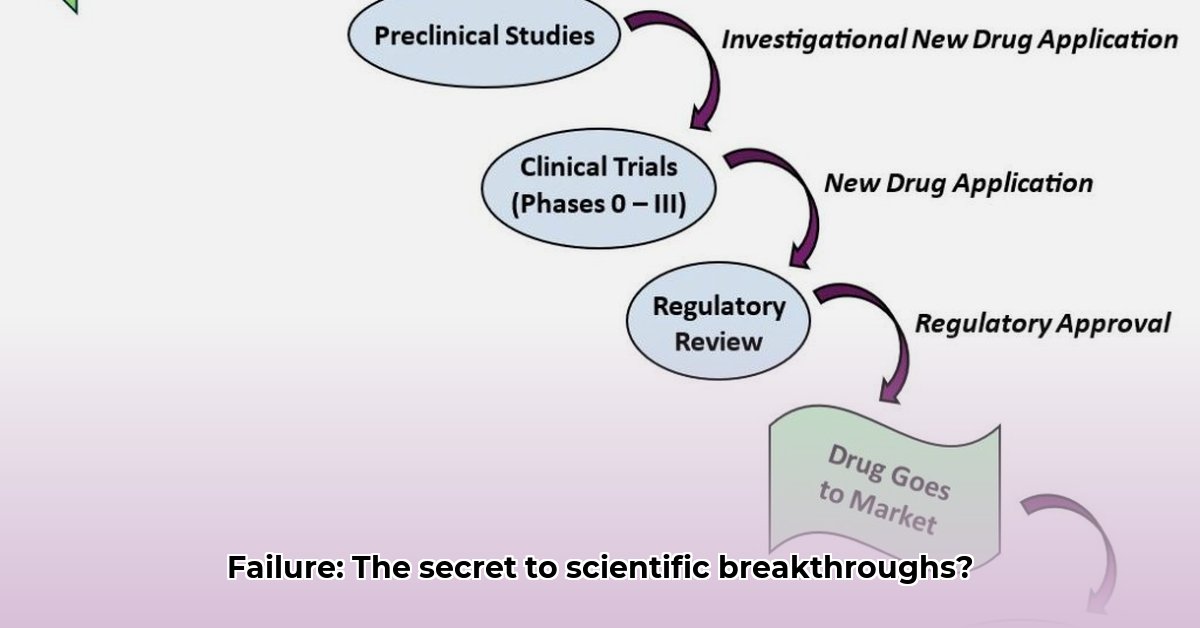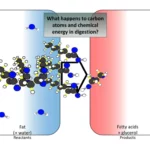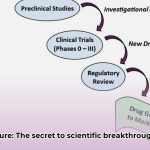We often celebrate groundbreaking scientific discoveries and those “aha!” moments. But what about the experiments that went wrong, the ideas that didn’t quite pan out, and the times scientists faced setbacks? These so-called failures aren’t roadblocks; they’re integral to the journey of scientific progress. This article explores why embracing failure is crucial for real scientific advancement. We’ll delve into common pitfalls, ways to navigate setbacks, and strategies to cultivate a “can-do” attitude that fuels scientific success. Learn how to transform setbacks into stepping stones and elevate your research. Feeling like an imposter is common; learn more about [imposter syndrome](https://www.lolaapp.com/the-impostor-syndrome-why-successful-people-often-feel-like-frauds).
The Scientific Method: Leveraging Failure for Discovery and Breakthroughs
We often celebrate incredible scientific breakthroughs, those eureka instances that change the trajectory of everything. But what about all the experiments that didn’t quite go as planned? The paths that led to dead ends? The seemingly unexpected shortcomings? These are not merely hindrances; they are, in fact, the core ingredients in the overarching recipe for scientific advancement. In the context of science, failing doesn’t represent the antithesis of success; on the contrary, it often constitutes a pivotal element in attaining it.
Consider the act of constructing a house. It’s unlikely that one would begin by haphazardly joining boards together without a plan, isn’t it? Instead, blueprints are consulted, modifications are made, and occasionally, sections that prove unsatisfactory are dismantled. Science operates on a similar principle. Every experiment, irrespective of whether it achieves its intended mark or falls short, imparts invaluable knowledge. An experiment deemed a “failure” may reveal deficiencies in the employed methodologies, consequently prompting enhancements. It may even yield wholly unforeseen insights, thereby paving the way for entirely novel discoveries. Learning from these scientific research errors is key to scientific advancement.
Envision a sculptor meticulously refining a marble block, with each strike contributing to the unveiling of the envisioned form. The sculptor refrains from aiming for perfection from the outset, choosing instead to continuously assess and implement alterations. Occasionally, they might even discard sizable segments of their endeavor. It is through this iterative approach, characterized by experimentation and rectifying errors, that masterpieces come into being. The scientific method operates on similar grounds. Each undertaking, irrespective of its apparent success or failure, furnishes valuable data. A venture initially deemed a “failure” might shed light on previously unnoticed issues or serve as the impetus for exploring uncharted territories.
Let’s consider the serendipitous discovery of penicillin. Sir Alexander Fleming didn’t stumble upon this life-saving antibiotic through meticulously flawless planning. He observed the inhibition of bacterial growth by mold purely by chance – a fortuitous observation stemming from an experiment that had gone awry. This so-called “failure” transformed the landscape of medicine entirely. This underscores a central truth: occasionally, the most profound discoveries arise unexpectedly, frequently emerging from what we originally perceive as failures. Embrace the unexpected in scientific experiments. A similar example is the development of the microwave oven. Percy Spencer, a Raytheon engineer, was working on radar technology when he noticed a chocolate bar in his pocket had melted. This accidental observation led to the invention of an appliance that revolutionized cooking.
There is a recognized issue, however. Within the realm of science, a prevailing bias exists towards exclusively publishing outcomes deemed successful. This engenders a culture wherein scientists might hesitate to openly discuss their failures, fearing potential criticism from peers or a scarcity of funding opportunities. However, this inclination to exclusively highlight positive results tends to overshadow the intricate, iterative learning process that is fundamentally indispensable for advancement. Emphasis should be on celebrating the whole journey, rather than merely the destination. It is imperative that the scientific community fosters a shift in perspective, acknowledging failure as an intrinsic component of the scientific method.
Sophien Kamoun, a professor of biology and senior scientist at the Sainsbury Laboratory, highlights the importance of distinguishing between failed, inconclusive, and conclusive experiments. He argues that a robust result that contradicts a hypothesis is valuable because it allows scientists to refine their understanding and develop new hypotheses. This perspective emphasizes that science involves falsifying hypotheses, not just proving them.
So, what actions can be taken to cultivate an environment that is more accommodating of failures? Here are strategic and applicable steps for researchers, universities, and funding organizations:
For Individual Researchers:
- Maintain exhaustive records: Diligently chronicle each experiment undertaken, irrespective of the resultant outcome. This meticulous approach to record-keeping affords the opportunity to retrospectively scrutinize and potentially unearth latent insights from past “failures.”
- Solicit comprehensive feedback: Engage with colleagues in meaningful discussions. Share ideas and insights openly. Peer evaluations prove invaluable, not only for projects considered successful but also for discerning areas where challenges were encountered.
- Engage in mindful reflection: Upon the culmination of each experiment, dedicate time to meticulously assess the components that proved successful, those that did not, and the underlying justifications. Prioritizing learning derived from mistakes is paramount. Maintaining a detailed journal chronicling your cognitive processes can prove exceedingly beneficial.
- Strategically balance risk: Adopt a diversified approach to research endeavors, balancing high-risk, high-reward projects with those of a more incremental and less precarious nature. This approach facilitates the cultivation of realistic expectations and guards against pervasive setbacks.
- Explore alternative publication avenues: In instances where conventional journals demonstrate reluctance to disseminate findings of an inconclusive nature, explore alternative platforms such as pre-print servers or journals characterized by less stringent constraints.
- Embrace collaboration: Working with diverse teams can provide fresh perspectives and help identify potential flaws in experimental design or interpretation. Collaboration fosters a supportive environment where researchers feel more comfortable sharing challenges and learning from each other’s mistakes.
For Universities and Funding Agencies:
- Incorporate failure-centric education: Integrate instructive modules on effectively navigating failure into science curricula. Champion the acceptance of failure as an inherent element of the educational trajectory. This will cultivate a heightened sense of ease among future scientists.
- Cultivate supportive environments: Foster inclusive environments wherein scientists are emboldened to undertake calculated risks and openly deliberate on their setbacks, bereft of apprehension regarding censure. Instilling openness and transparency is paramount.
- Invest in failure-related research: Allocate funding towards scholarly investigations into the psychological underpinnings of failure within the scientific domain. Comprehending the cognitive mechanisms underpinning scientists’ perceptions of and responses to failure will inform the creation of more efficacious strategies for effectively managing it.
- Revise grant guidelines: Encourage transparency in grant proposals by empowering researchers to openly address potential challenges and setbacks. This approach demonstrates an authentic comprehension of the inherent complexities of the research process.
- Promote interdisciplinary research: Encourage collaboration between different departments and disciplines to foster innovative problem-solving approaches. Interdisciplinary perspectives can provide new insights into complex research challenges and lead to unexpected breakthroughs.
- Recognize and reward researchers who openly share their failures: Create awards or incentives for researchers who publish negative results, present their failures at conferences, or mentor junior scientists on how to navigate setbacks. This will help to destigmatize failure and create a culture of openness and learning.
By revolutionizing the ways in which failure is perceived, reframing it not as the antithesis of success but rather as an essential springboard for advancement, a more robust and resourceful scientific ecosystem is created. It entails fundamentally reshaping the narrative—deeming that failure is not a cause for shame but instead a precious occasion to acquire knowledge and insight. Valuing the entirety of the scientific undertaking, encompassing its missteps, modifications, and eventual breakthroughs, is deemed important. The totality of the process, inclusive of its “failures,” shapes the broader perspective. Fully embracing and internalizing this reality culminates in a more efficacious and resilient scientific cohort, better equipped to confront intricate challenges.
How to overcome publication bias when publishing failed scientific experiments
Key Takeaways:
- Publication bias creates a distorted view of scientific progress by favoring positive results.
- Experiments considered “failed” are incredibly important, shaping future studies and providing key insights.
- Addressing publication bias requires collaboration among researchers, journals, funders, and regulatory bodies.
- Open science strategies, such as pre-registration and transparent data sharing, are essential.
- We need new ways to measure success that value sound methods, not just results that show statistical significance.
The Hidden Value of “Failure” in Scientific Studies
Imagine a sculptor shaping a marble block, each cut revealing the form inside. Some cuts may seem small, even like mistakes. But what if those “failures” – the pieces removed – were key to understanding the final artistic expression? In science, “failed” experiments often play a similar role. They aren’t failures at all; they’re steps on the way to major discoveries. Yet, publication bias, which favors sharing only positive results, hides these important learning experiences, creating a major obstacle for scientific advancement. Therefore, asking how to overcome publication bias when publishing failed scientific experiments becomes a key question to ask.
The Problem: A Skewed Landscape in Research
Publication bias causes a distorted picture of what’s really happening in science. Imagine a medical treatment that doesn’t work in many trials. Only the few trials that show some benefit might be shared. This can lead to unrealistic expectations and potentially harmful practices. The truth is, many hypotheses don’t work out. But these seemingly “negative” results are vital. They tell us what doesn’t work, which is just as important as what does. Ignoring them limits scientific progress. They are valuable data that help us avoid repeating mistakes, create more efficient research plans, and focus our efforts more effectively. A 2012 study published in Perspectives on Psychological Science suggested that as many as 50% of published findings in psychology might be false positives due to publication bias and other methodological issues.
Strategies for Change: A Need for Collaborative Effort
Addressing publication bias requires a collective shift from valuing only “successful” results to accepting a broader view of the research process. This calls for changes on different levels:
- Researchers: Start using pre-registration of studies, which outlines the research plan before collecting data. This promotes transparency and reduces the temptation to selectively share results. Researchers should also improve how they report their methods, even for “unsuccessful” experiments. Most importantly, researchers must actively submit and push for the publication of all findings, regardless of the outcome.
- Journals & Publishers: Make peer review processes stricter to ensure careful evaluation of all submissions. Consider blinded reviews, where reviewers don’t know the study’s outcome until after the methods have been assessed. More importantly, journals need to dedicate space to publishing negative results, changing the current reward system that encourages publishing only positive findings. Some journals, like the Journal of Negative Results in Biomedicine, are specifically dedicated to publishing negative and inconclusive results.
- Funding Agencies: Shift funding priorities away from only rewarding results that show statistical significance. Funders can encourage the publication of all research findings by changing their grant rules to reward sound methods and transparent data sharing, no matter the outcome. They can also fund replication studies and research that focuses on finding and fixing publication bias. The National Institutes of Health (NIH) and the National Science Foundation (NSF) could implement policies requiring grant recipients to share all data, regardless of the outcome of the study.
- Regulatory Bodies: Strengthen the requirements for trial registration. This can help identify all experiments, regardless of the outcome, creating a more complete view of the research landscape. Creating publicly available data repositories for all research data would add another level of transparency. Organizations like the World Health Organization (WHO) can play a role in setting international standards for trial registration and data sharing.
A New Metric for Success in Research
Imagine evaluating a painter only on their finished paintings, ignoring the many sketches and studies that led to the masterpiece. This is similar to the current focus on positive results in science. Revolutionary change is needed: We need to develop new metrics that value the entire scientific process – the careful planning, the sound methods, and even the “failed” attempts. This means focusing on replicability, transparent methods, and the strength of the underlying evidence itself, regardless of statistical significance.
The Path Forward: Embracing Transparency in Science
Ultimately, how to overcome publication bias when publishing failed scientific experiments comes down to transparency. Open science practices that encourage collaboration and the sharing of all data, including “negative” results, are crucial. By changing how we view failure – recognizing its importance in shaping future research and fostering a more accurate understanding of the scientific landscape – we can unlock breakthroughs and move toward a more reliable body of scientific knowledge.
Proven Tactics To Embrace Failure In Your Research- A Step-By-Step Guide for Scientists
Have you ever felt the disappointment of a research project that didn’t go as planned? The time wasted and the feeling that you’ve failed? What if failure, in science, isn’t the end but a crucial step forward? This isn’t about celebrating mistakes; it’s about learning how to use them.
Reframing Failure: From Setback to Motivation in Research
The scientific method isn’t a straight line; it’s a road with unexpected turns. Think of it like a treasure hunt, where every dead end provides a clue that leads you closer to the treasure. Those “failures,” the experiments that didn’t give the expected results, offer valuable knowledge. They reveal flaws in your method, highlight unexpected variables, and push you to improve your approach.
Think about Marie Curie struggling to isolate radium. Her many attempts, filled with setbacks and failed experiments, eventually led to major discoveries. Her hard work, a result of learning from failures, changed the world. This is the mindset we must adopt. Another example is Thomas Edison’s relentless pursuit of a working light bulb. He reportedly tried thousands of different materials before finally finding one that worked. Each failed attempt provided valuable information that helped him refine his approach and ultimately achieve his goal.
Proven Tactics To Embrace Failure In Your Research- A Step-By-Step Guide
This is about doing more than accepting failure; it’s about actively reducing risks and turning setbacks into chances to learn.
Step 1: Plan for possible Failures
- Start with a detailed research plan. Include backup plans and think about possible problems.
- Don’t avoid pilot studies. These smaller tests help you find weaknesses early, reducing bigger problems later.
- Conduct thorough literature reviews. Understanding previous research can help you anticipate potential challenges and avoid repeating past mistakes.
Step 2: Accept the Iterative Process
- The scientific method is iterative. Expect setbacks; they’re part of learning.
- Regularly check your progress. Are you on track? Do you need to adjust your approach? Don’t hesitate to change direction.
- Embrace flexibility. Be willing to adapt your research plan as new information becomes available.
Step 3: Communication is Key
- Encourage open communication within your team. Share problems; this helps with problem-solving and boosts team spirit.
- Seek feedback from mentors, colleagues, and even those outside your field. Various views can often reveal blind spots.
- Participate in conferences and workshops. These events provide opportunities to share your work, receive feedback, and learn from the experiences of others.
Step 4: Document Every Step
- Carefully document your findings, both positive and negative. Detailed records provide valuable data for future analysis.
- Keep a detailed log of your experiments and the problems you face. This information forms the basis for future improvements.
- Use standardized data collection methods. This will ensure the accuracy and reliability of your data and make it easier to compare your results with those of other researchers.
Step 5: Analyze and Adapt your Scientific Endeavors
- When setbacks occur, don’t panic. Analyze the situation step by step.
- Identify the main reason for failures. Refinement is key—improve methods, refine your hypothesis, or re-evaluate your approach.
- Celebrate the lessons learned from each failure.
- Use statistical analysis to identify patterns and trends in your data. This can help you understand why your experiments may have failed and identify areas for improvement.
Key Takeaways:
- Failure is a natural part of the research process.
- Proactive planning reduces the impact of setbacks.
- Open communication and teamwork are crucial.
- Detailed documentation is essential for learning.
- Analyzing failures leads to valuable insights and improved methods.
How To Develop A Growth Mindset For Scientific Success- Expert Advice in the Field
Key Takeaways:
- Accepting failure is crucial for scientific progress. Setbacks are inevitable steps forward.
- A growth mindset, which believes abilities can improve, encourages hard work and resilience.
- Specific techniques can help researchers develop a growth mindset.
- Supportive environments, both personal and professional, are important.
- Neuroscience increasingly supports the benefits of a growth mindset.
The Unexpected Gifts of Failure in Research
Have you ever thought of failure as a necessary part of scientific breakthroughs? It may sound odd at first, but many scientific discoveries have come from what were initially seen as failures. Consider penicillin, a chance discovery that revolutionized medicine. The original experiment wasn’t going as planned, yet that ‘failed’ experiment led to a life-saving drug. This isn’t unusual; it’s a common theme in many advancements. Another example is the story of Viagra. Originally, it was researched as a treatment for hypertension and angina pectoris. While it didn’t prove effective for those conditions, researchers noticed an interesting side effect: penile erections. This unexpected outcome led to the drug being repurposed as a treatment for erectile dysfunction, a multi-billion dollar application.
What if scientists gave up when they first encountered a problem? Progress would stop. The scientific method is iterative, a cycle of hypotheses, experiments, and analyses. Sometimes the steps lead to the expected results; other times, they lead to unexpected twists. Learning from these unexpected turns is crucial.
Reframing Setbacks: A Growth Mindset Approach in Scientific Endeavors
This is where How To Develop A Growth Mindset For Scientific Success- Expert Advice becomes valuable. A growth mindset isn’t about avoiding failure; it’s about how you handle it. Scientists with a growth mindset see challenges as chances to learn, not as threats. They view mistakes as steps toward growth, not signs of incompetence. It’s about facing the iterative process with resilience, seeing obstacles as puzzles to solve rather than barriers to success. Carol Dweck, a Stanford University psychologist, is a leading expert on the growth mindset. Her research has shown that individuals with a growth mindset are more likely to persevere through challenges, embrace feedback, and achieve their goals.
Practical Steps to Cultivating a Growth Mindset in the Sciences
How can you personally develop this indispensable mindset? Here are a few strategies:
- Reframe your self-talk: Instead of thinking “I failed,” try “This didn’t work as planned; what can I learn from this?”
- Embrace challenges: Actively seek new and difficult research problems. Don’t avoid complexity.
- Seek feedback: Actively ask for feedback and use it as a tool for improvement. Be open to criticism.
- Learn from mistakes: Analyze your failures, identify the main cause, and make changes for future experiments. Document your progress.
- Develop a support network: Surround yourself with supportive mentors and collaborators who promote growth and understanding. Discuss your struggles.
- Practice mindfulness: Mindfulness techniques can help you manage stress and maintain a positive attitude during setbacks. Mindfulness-based stress reduction (MBSR) programs have been shown to be effective in reducing stress and improving well-being.
- Set realistic goals: Break down complex research projects into smaller, more manageable goals. This will help you stay motivated and avoid feeling overwhelmed by setbacks.
- Celebrate small victories: Acknowledge and celebrate your progress, no matter how small. This will help you maintain a positive attitude and build momentum.
The Neuroscience of Success in Science
New neuroscience research offers insights that support the importance of a growth mindset. Studies using brain imaging, like fMRI, show more activity in brain areas related to motivation and learning in those with a growth mindset, especially when facing challenges. This suggests it’s not just about attitude but also a real effect on how our brains process information. Studies have shown that individuals with a growth mindset exhibit increased activity in the prefrontal cortex, a brain region associated with planning, decision-making, and cognitive control.
Building a Growth Mindset Culture
Institutions and funding bodies also play a key role. By promoting a research environment that values learning, collaboration, and risk-taking, they create ideal conditions for scientific innovation. Growth mindsets don’t develop alone; they thrive in supportive systems. Institutions can implement mentoring programs, workshops, and training sessions to promote a growth mindset among their researchers.
Remember, scientific progress is a marathon, not a sprint. Embrace the journey, accept the inevitable setbacks, and cultivate a growth mindset to reach your full potential.















